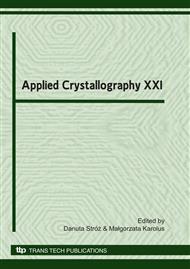p.243
p.247
p.253
p.256
p.260
p.264
p.268
p.272
p.278
X-Ray Topography Study of the Nickel Superalloy CMSX-4 Single Crystals
Abstract:
The paper attempts to determine structural perfection of monocrystalline nickel superalloys using X-ray topography. Monocrystalline bars and turbine blades were manufactured in an ALD Vacuum Technologies furnace using the Bridgman method. Pulling out rates typical for CMSX-4 nickel superalloys were used. It has been found that in the case of monocrystalline bars the structural perfection determined based on X-ray topograms does not depend on the distance from the selector. Instead, for blades the structural perfection significantly decreases with increasing distance from the selector.
Info:
Periodical:
Pages:
260-263
Citation:
Online since:
June 2010
Keywords:
Price:
Сopyright:
© 2010 Trans Tech Publications Ltd. All Rights Reserved
Share:
Citation:


